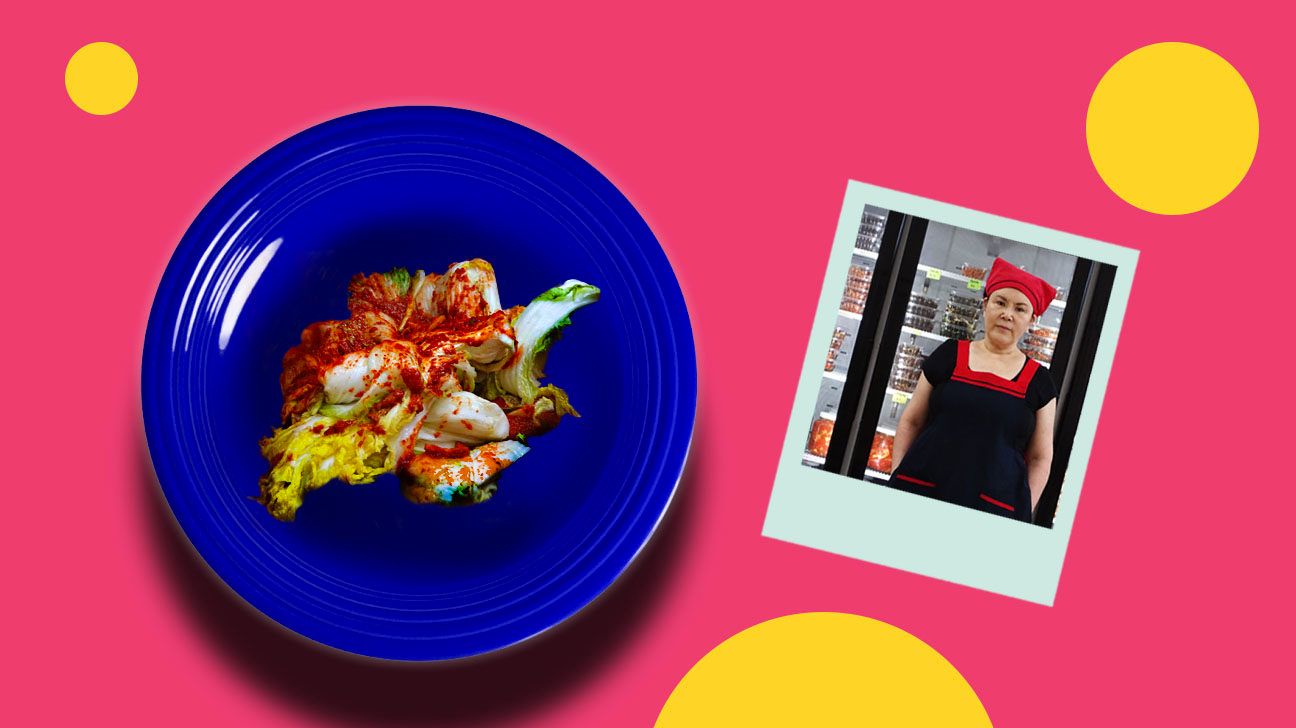
This recipe comes courtesy of Park Choon-Hee for “This Is Not the Kimchi You Know — It’s Better,” written by Grace Moon. Read Mrs. Park’s story here.
Park Choon-Hee explains that her kimchi recipe is versatile and can be adapted to any vegetable. Her recipe uses a traditional homemade broth in lieu of MSG. The broth revolves around bringing three flavor profiles into harmony: dambek-ham (cleanness), siwon-ham (freshness), and dan-mat (sweetness).
Ultimately, you’ll want to create kimchi that suits your own palate! Use this to get a sense of how much of the ingredients to buy, but don’t feel tied to following this exact recipe.
Mrs. Park encourages taste-testing instead of following specific measurements. “This is difficult for me!” she says over the phone, trying to recount the number of scallion roots she uses. “I never actually count. It’s all by neukkim [feel]. Aigoo, younger people have to trust their taste buds!”
Ingredients
Dambek-ham (cleanness)
Handful of scallion roots (about 15)
Skin of 2 onions
2 shiitake mushrooms
1 potato
Siwon-ham (freshness)
4–5 dried pollack
20 small dried shrimp
5 dried anchovies
Handful of dried kelp
Dan-mat (sweetness)
¼ pear
¼ apple
¼ onion
1 cup gochugaru (red chili flakes)
10 cloves garlic, minced
Thumb-size piece ginger, grated
Napa cabbage and radishes, using a 7:3 ratio
Directions
- For the dambek-ham and siwon-ham bases: To make your base yooksoo, or broth, combine the scallion roots, onion skins, shiitake mushrooms, and potato with the pollack, shrimp, and anchovies in a large pot. Boil these ingredients in 10 liters (about 2½ gallons) of water for 1 hour. Throw in the kelp in the last 15 minutes.
- For the dan-mat base: While your broth boils, thoroughly combine the pear, apple, and onion in a blender.
- Once your broth is ready, strain out the solids. Stir the blended dan-mat base into the strained broth.
- Add the gochugaru, garlic, and ginger to the broth, tasting as you go.
- Thoroughly coat each leaf of cabbage, even the insides. (Mrs. Park likes to tuck one or two radishes inside the cabbage by wrapping it tightly.)
- Continue until your jar is full of coated cabbage and radishes, or you have no more cabbage or radishes to put into your jars.
- Seal jar(s) firmly and let ferment for a few days.
Original recipe by Park Choon-Hee. Translated by Grace Moon.
